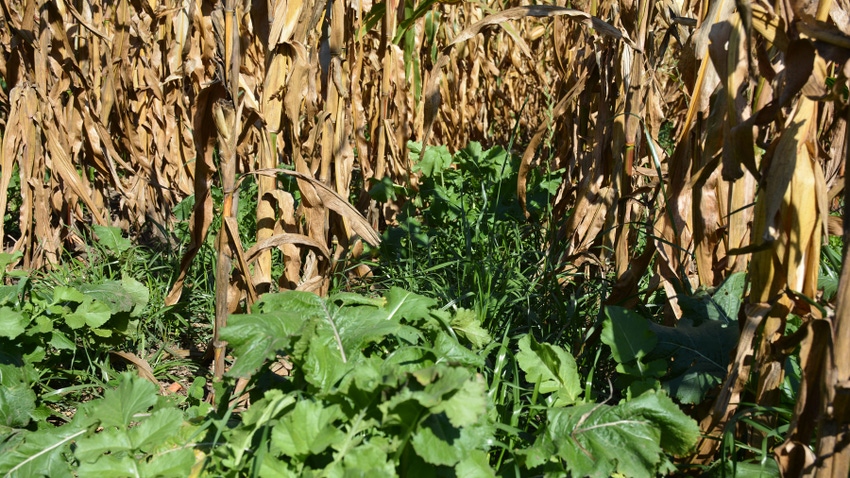
Taking the first step can be the hardest, and that is the case for producers contemplating a move to incorporate soil health practices. Taking those first steps is now a lot easier than, say, 20 to 30 years ago.
“Anyone starting this journey now has a lot more ability to talk to other people who have done the ‘heavy lifting,’” says Anthony Bly, South Dakota State University Extension soils field specialist. “Don’t think that you are all along making these decisions for your farm.”
Bly knows of what he speaks, because not only does he preach about building soil health and regenerative agriculture, but he has also lived it on his family farm near Garretson, S.D., where they switched to full no-till in 1992. Back then farmers had landline telephones, and newspapers and magazines, which all provided “a very powerful source of information,” but pale in comparison to the connectivity and sources of information available today.
“Education is key, learning, knowledge — and then realizing that it doesn’t stop,” he says.
Soil health principles
Knowing where to start is the first step, and Bly suggests that farmers focus on the soil health principles. “You need to understand those — how they interact, interplay with each other,” he says.
According to the South Dakota Soil Health Coalition, the five soil health principles are:
Soil cover. Keep plant residues on the soil surface. Look down; what percentage of your soil is protected by residue? Erosion needs to be minimized before you can start building soil health.
Limited disturbance. Minimize tillage as much as possible. You will start building soil aggregates, pore spaces, soil biology and organic matter.
Diversity. Try to mimic nature. Use cool- and warm-season grasses and broadleaf plants as much as possible, with three or more crops and cover crops in rotation. Grassland and cropland plant diversity increases soil and animal health.
Living roots. Keep plants growing throughout the year to feed the soil. Cover crops can add carbon to the soil, providing a food source for microorganisms. Start small to find the best fit for your operation.
Integrated livestock. Fall and winter grazing of cover crops and crop residue increases livestock’s plane of nutrition at a time when pasture forage quality can be low, increases the soil biological activity on cropland and improves nutrient cycling. Proper grassland management improves soil health.
“It’s not just one that’s going to get you there, it’s a combination of them all, and I think that scares a lot of people,” he says. “Particularly that last one — the livestock part — but I believe that you can introduce that component” through different means other than actually having hooves on the ground.
While farmers implementing soil health practices are great resources for knowledge, Bly also recommends checking out “A Soil Owner’s Manual: How to Restore and Maintain Soil Health” by Jon Stika, as well as the article Conquest of the Land Through Seven Thousand Years, by W.C. Lowdermilk.
‘Can’t be done here’
Farmers wanting to improve their soils’ health, whether it be implementing two or three of the soil health principles or all five, do not need to look too far for mentors. “While I cannot name one [farmer] for every county in our state [South Dakota], I would bet there is one that is trying something,” he says.
He adds that some of those practicing soil health improvement measures are being successful on land of which others would say, “That won’t work here.”
“The two biggest reasons that I’ve heard that ‘It won’t work here’ is that it’s too cold and it’s too wet,” he says. “There are farmers out there who are doing it where it’s too cold and too wet.” Bly is one of those farmers whose farm in southeastern South Dakota is in one of those supposed “too cold, too wet” areas.
Admitting there have been trying times over the years, Bly encourages farmers to not give up too early on the road to improved soil health.
“If it’s just tillage that you’re looking at, it’s going to take a lot longer to see the benefits,” he says, but with the use of cover crops and maintaining crop residues farmers should see runoff reductions within a year or two.
While monoculturalism works for many farmers, Bly recommends seeking diversity.
“When you start realizing that diversity or the soil food web is so important, then you understand that to function correctly, it needs this diversity,” he says. A monoculture system can be fed artificially to keep the system going, but Bly says “it’s the diversity that can do that job for you, and that’s where all these principles come in. So, if you take a field or part of a field, and you understand the principles, and you’re including rotation, and no-till and cover crops, and maybe grazing and all things go well, I would bet in three to five years you should see marked changes.”
He also suggests to not make a complete conversion at once; start implementing these principles on small fields or small portions of a field to see what works on your farm. Also, keep in mind that there are many farmers who have already walked the path to improved soil health — let them lead you and learn from them.
About the Author(s)
You May Also Like






